
by Dee Harlow (Laos) | Aug 14, 2014 | 2014, Awareness, Being Thankful, Cultural Differences, Culture, Family, Inspirational, Kids, Lesotho, Life Balance, Living Abroad, Marketing, Motherhood, Siblings, Travel, Twins, Womanhood, World Motherhood, Younger Children
 My family and I have just returned home to the United States after living in Laos for the past two years. We’ve been back in the States for 1.5 weeks and the highlight of my day today was a successful trip to a clearance sale at the local used children’s clothing store here in Denver, Colorado.
My family and I have just returned home to the United States after living in Laos for the past two years. We’ve been back in the States for 1.5 weeks and the highlight of my day today was a successful trip to a clearance sale at the local used children’s clothing store here in Denver, Colorado.
For $200 U.S. dollars, I bought 50 pieces of clothing for my 4.5-year old boy and girl twins to last them (hopefully) for the next three years, when we will be living in Lesotho.
No, you’re not reading typos (WMB editors are awesome). Yes, that’s $200 for 50 pieces of clothes including: jeans, pants, shorts, collared shirts, t-shirts, cute shirts, dresses, skirts, leggings, pajamas, and swimwear, sizes 5 – 8. All are like new, and many top quality brands, which some of you might recognize: Gymboree, Hanna Andersson, Mini-Boden, Garnet Hill, Gap, Carter’s.
I’ve been shopping for used children’s clothing ever since my kids were born. Heck, they’ve been living mostly in hand-me-downs from relatives and friends and this store’s used clothing.
They’ve been happy. I’ve been happy. And we’ve all received compliments on their cute clothes. I really wouldn’t do it any other way.
Sure, I see loads of advertisements, storefronts and catalogs filled with great stuff I’d love to buy, and can afford to buy. But my practical sensibilities and appreciation of value for money mostly always stops me…
”They grow so fast.”
“It’ll just get dirty or torn up.”
“Hey, those are adult clothing prices!”
As they say, “Waste Not Want Not.” Or, “One Man’s Trash Is Another Man’s Treasure.”
When I was living and working in Singapore as an investment banker, single, no kids, I was a spendthrift. Not a care in the world, except to ensure I saved for my pension.
I used to give my housekeeper handbags and shoes from the back of my closet that had gotten moldy in the extreme humidity, and she would always be delighted to receive these items that I thought were in state of trash-worthy grossness.
Weeks later, I would compliment her on her great purse or shoes and she would say, “These are the ones you gave me Ma’am.” Seriously. I felt like a fool. All I had to do was wipe them clean and put on a coat of leather polish. Silly, young, spendthrifty me.
Now I make sure our belongings are well cared for so they can last, or so they can be passed on and re-used. In Laos, used items purchased or made in America were highly coveted and sold fast. Everyone from our housekeeper, gardener, guard, colleagues at work and folks on a “buy & sell” Facebook site, gobbled up everything that wasn’t typically available locally or across the border in Thailand. Mostly because it was either cheaper, or better quality.
Consumer products sold throughout Asia tend to be of very low and questionable quality, and often not available at all in Laos.
Coming back to the land of plenty and choices, I still try to maintain the same mindset. Things can be valued for much more fundamental reasons than merely being new, or beyond the marketing image of “need” or status or image.
Sure, we can bring in the extreme perspective of the garbage dump cities all of the world where people and children actually live off of, and even earn a living from garbage. And our gut reaction is to think about how we can help them and change their situation, and feeling with a passion that something must be done about them, when in fact, it starts with us.
If we can change our habits and our mindsets, if we can demand less, if our values can put a limit on the things we accumulate versus things we re-use, then…
Who knows? Who knows what the solution is to uber-consumerism? Everyone all over the world seems to want it. Our demand for it makes it thrive. It’s not completely wrong, yet somehow it doesn’t seem right.
What does seem right to me is $200 for 50, and I’ll stick with it for as long as I can.
This is an original post to World Moms Blog by our mother of twins writer, Dee Harlow, currently in transit to live in Lesotho. You can also find her on her blog Wanderlustress.
Photo credit attributed to Mark Frauenfelder. This photo has a Flickr Creative Commons Attribution-Non-Commercial-ShareAlike license.
One of Dee’s earliest memories was flying on a trans-Pacific flight from her birthplace in Bangkok, Thailand, to the United States when she was six years old. Ever since then, it has always felt natural for her to criss-cross the globe. So after growing up in the northeast of the US, her life, her work and her curiosity have taken her to over 32 countries. And it was in the 30th country while serving in the Peace Corps in Uzbekistan that she met her husband. Together they embarked on a career in international humanitarian aid working in refugee camps in Darfur, Sudan, and the tsunami torn coast of Aceh, Indonesia.
Dee is now a full-time mother of three-year old twins and continues to criss-cross the globe every two years with her husband who is in the US Foreign Service. They currently live in Vientiane, Laos, and are loving it! You can read about their adventures at Wanderlustress.
More Posts

by Nancy Sumari | Aug 6, 2014 | 2014, Nancy Sumari, Tanzania, Womanhood, World Moms Blog

I have a birthday this week. An occasion which would usually have me getting excited, prepping for a party or a date night. Or if it were my daughter or better half’s birthdays, you would find me really excited and organizing a party or some sort of celebration.
But this time around, for my birthday, it’s not working out as per usual. I don’t want a celebration or a party. I want something quiet and non obvious, like staying home all day and catching a movie afterwards. Although it doesn’t look like that will happen if my girlfriends have anything to do with it.
By nature I’m a person who gets pretty excited. I’m known not to turn down a party. But for some reason, as I get older, I’m just not keen about celebrating getting older. Sometimes I can feel the clock ticking in my head, but that’s another story for another day.
A male colleague once asked, “What is with women and their age?” It got me thinking. What is it with women and their age?? For some women, even just asking their age is an unforgivable offense.
The sense of alarm and urgency that has overcome me lately is strange yet it has been happening with greater frequency.
Maybe it has to do with the fact that my daughter is growing up faster than I like. Or maybe it’s because I feel that there’s so much I still want to do right at the age I am. Not to mention that of course my body changing and witnessing it is not very desirable.
I suppose I should embrace it. Take it by the horns and “wonder-woman” style my way through these feelings? But how? How do I get excited when all I want is to do is stay in bed all day and not hear a word about my birthday?
Has anyone else ever gotten weary of growing a year older?
This is an original post by Nancy Sumari from Tanzania. You can find more of her writing at Mama Zuri.
Photo courtesy of the author.

by Elizabeth Atalay | Jul 29, 2014 | 2014, Africa, Ethiopia, Humanitarian, Inspirational, ONE, Social Good, World Moms Blog, World Voice
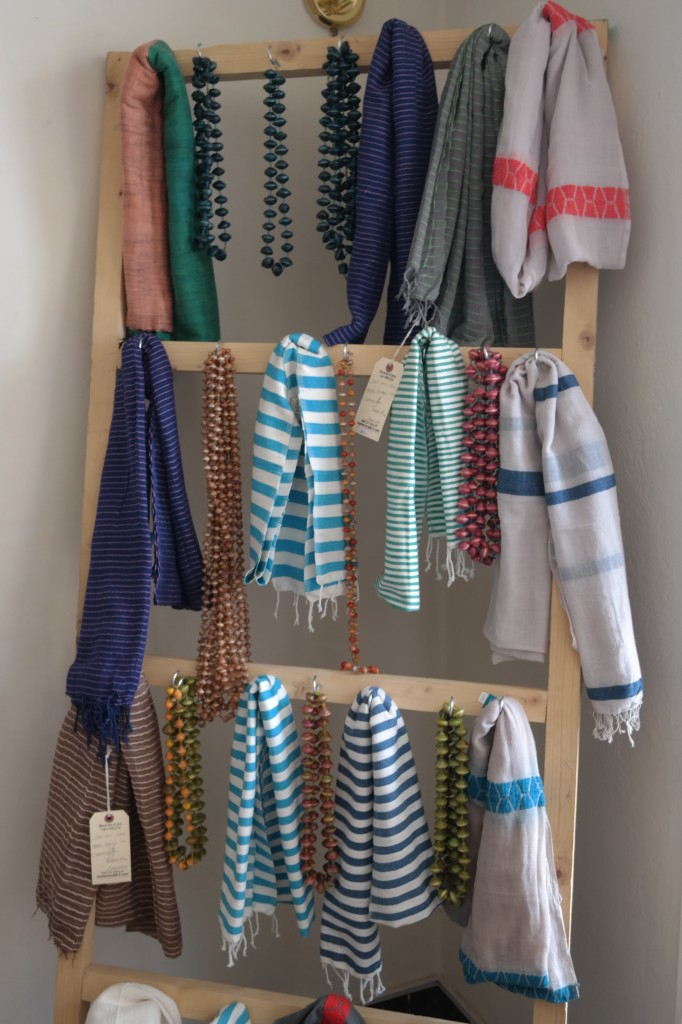
Twenty years ago Cherry had completed her university degree in business, but was still unemployed. Driving with her family one night past the prostitutes on the streets of Addis Ababa she and her family sparked a discussion that left her wondering about what separated her life from theirs. The street women who flashed them as they passed stayed in Cherry’s mind. She was an educated woman who could not find a job, how were these women supposed to find decent jobs if she couldn’t? She began going out at night to speak with the girls on the street and formed relationships that then became the foundation of “Women At Risk”, an NGO providing rehabilitation and job skills training to provide the women with alternate opportunities.
Today “Women At Risk” partners with Ellilta Products where the gorgeous FashionAble scarves that Nicole Melancon and I first heard of through the ONE Campaign are made. We knew if we had the opportunity while in Ethiopia on our International Reporting Project #EthiopiaNewborns New Media Fellowship trip we would love to visit the facility ourselves. Eden Genet Melke, Ellilta’s Business Development Manager was gracious enough to welcome us to the headquarters, show us around, and share the story of how it all began. Forty to forty-six women a year now go through the program of six months of rehabilitation followed by six months of job training. The program has had a 96% rehabilitation rate of women being able to leave behind their life on the streets and create a new future for themselves, and their children.
Cotton has been grown as a crop in Ethiopia as far back as Queen Sheba, and the history of rich textiles are woven into Ethiopian heritage. Initially the women in the program, most of whom are single mothers, were hesitant to learn weaving. In Ethiopia weaving has traditionally been a man’s trade. Most Ethiopian men in the southern region know how to weave, and the women customarily have done the spinning, but once the women saw their finished products with their names on them, (each scarf comes with a name tag signed by the woman who made it) their sense of pride in what they were able to create emerged.
Here is how the process of transformation takes place
Raw Cotton
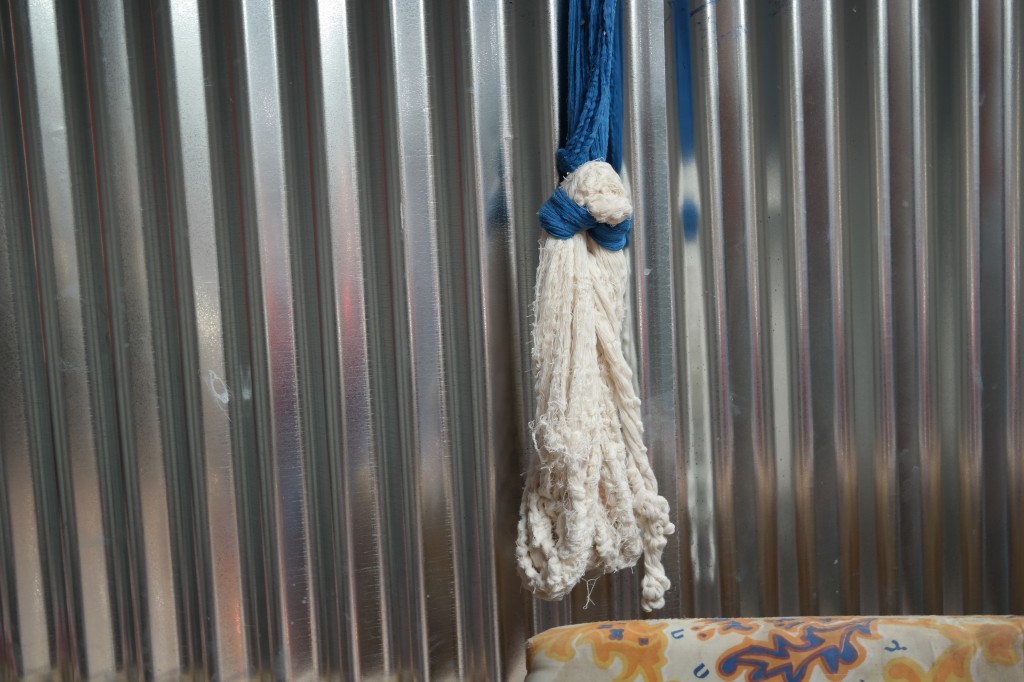
Colorful Dye
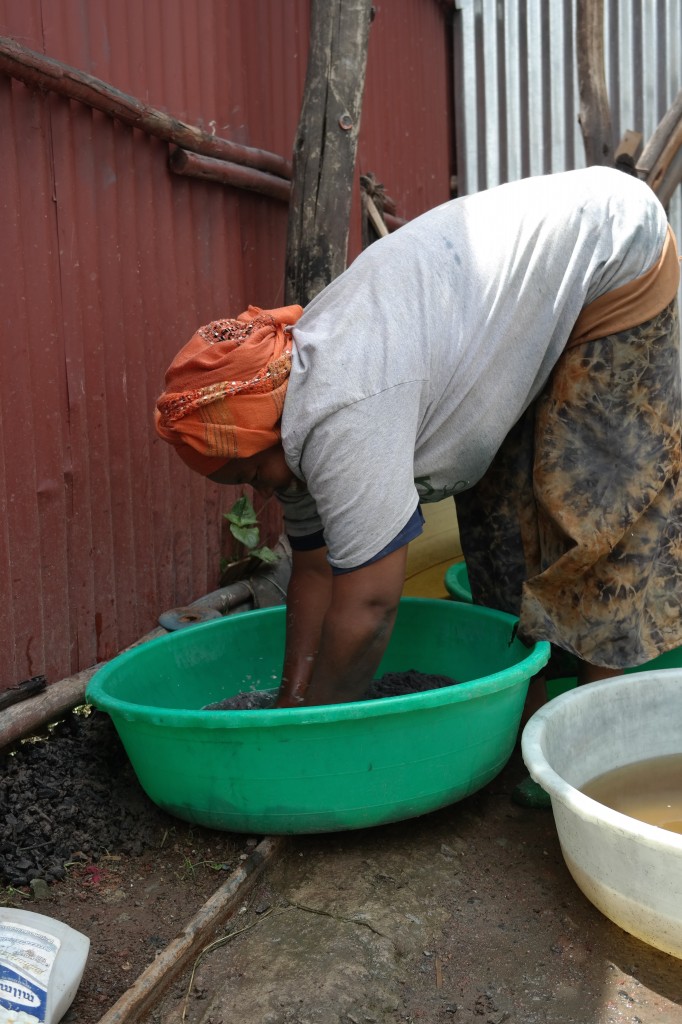
Dried In The Sun
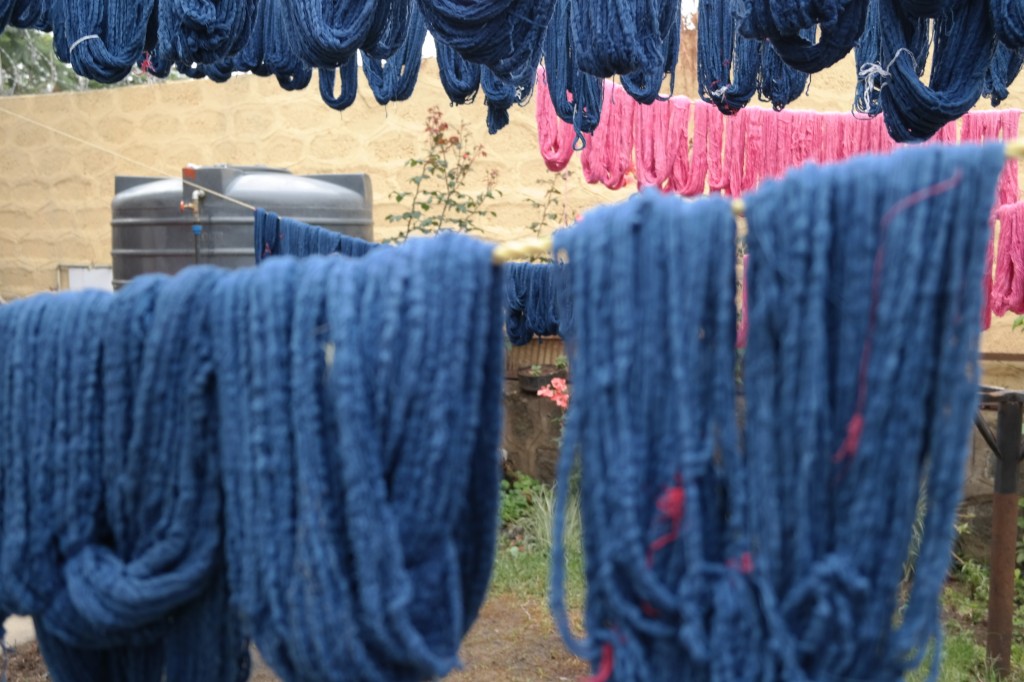
Spun
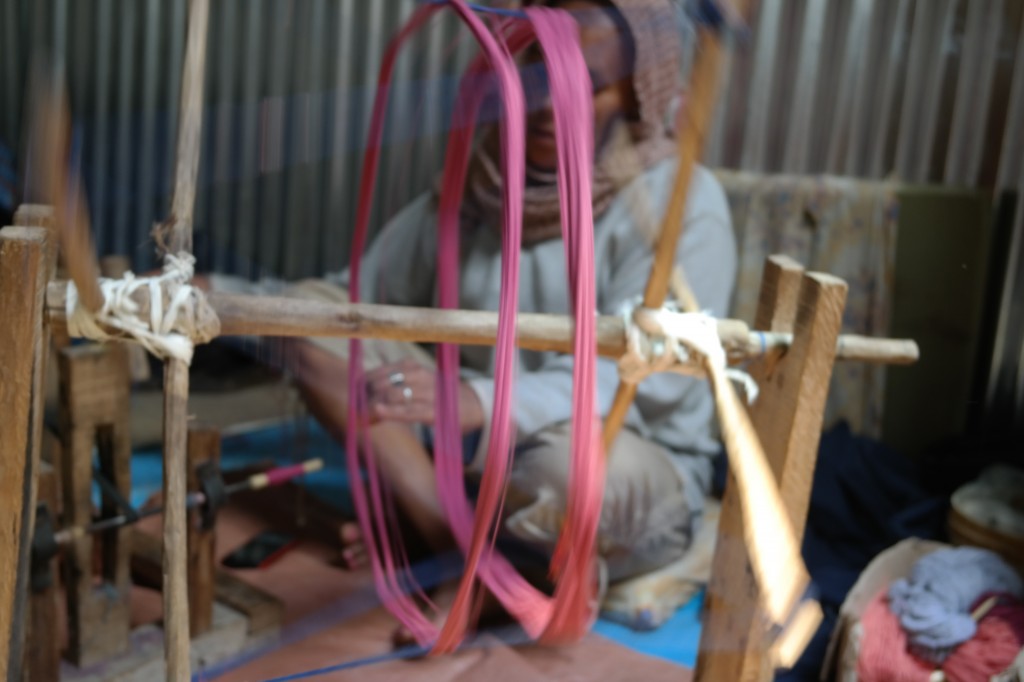
Then Woven Into the Beautiful Creations They Become
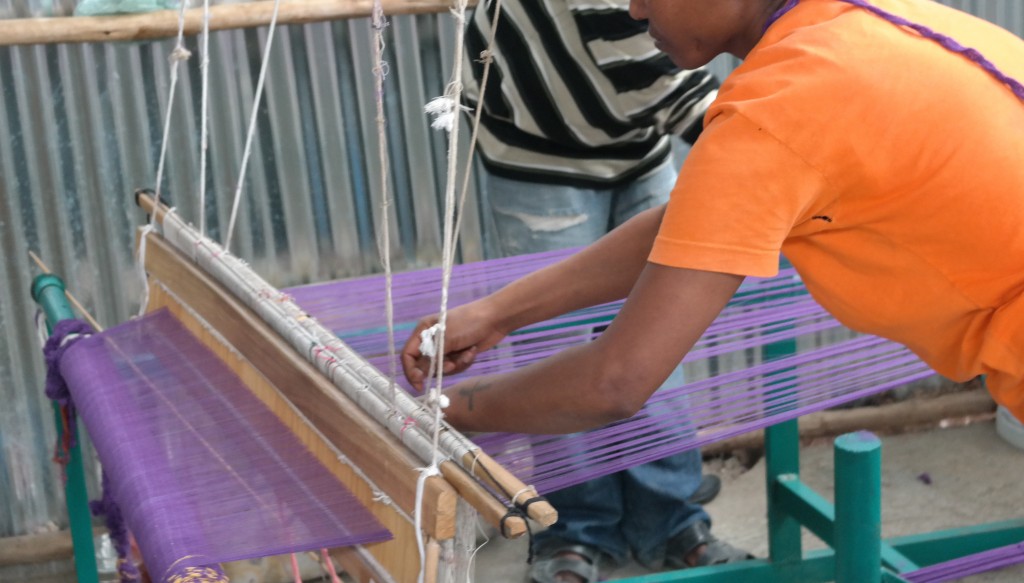
This is an original post written by Elizabeth Atalay of Documama for World Moms Blog
Elizabeth Atalay and Nicole Melancon were in Ethiopia with The International Reporting Project #EthiopiaNewborns New Media Fellowship reporting on newborn health.

Elizabeth Atalay is a Digital Media Producer, Managing Editor at World Moms Network, and a Social Media Manager. She was a 2015 United Nations Foundation Social Good Fellow, and traveled to Ethiopia as an International Reporting Project New Media Fellow to report on newborn health in 2014. On her personal blog, Documama.org, she uses digital media as a new medium for her background as a documentarian. After having worked on Feature Films and Television series for FOX, NBC, MGM, Columbia Pictures, Warner Brothers, 20th Century Fox, and Castle Rock Pictures, she studied documentary filmmaking and anthropology earning a Masters degree in Media Studies from The New School in New York. Since becoming a Digital Media Producer she has worked on social media campaigns for non-profits such as Save The Children, WaterAid, ONE.org, UNICEF, United Nations Foundation, Edesia, World Pulse, American Heart Association, and The Gates Foundation. Her writing has also been featured on ONE.org, Johnson & Johnson’s BabyCenter.com, EnoughProject.org, GaviAlliance.org, and Worldmomsnetwork.com. Elizabeth has traveled to 70 countries around the world, most recently to Haiti with Artisan Business Network to visit artisans in partnership with Macy’s Heart of Haiti line, which provides sustainable income to Haitian artisans. Elizabeth lives in New England with her husband and four children.
More Posts

by Katinka | Jul 28, 2014 | 2014, Adoption, Adoptive Parents, Being Thankful, Belgium, Birth Parents, Childhood, Contest, Cooking, Cultural Differences, Discipline, Ethiopia, Family, Food, Health, Kids, Life Balance, Motherhood, Multicultural, Nutrition, Parenting, Siblings, World Motherhood, Younger Children
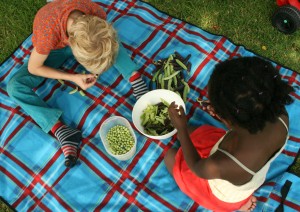 I’ve yet to meet a mom who is not monitoring her kid’s eating habits. Some might even be obsessed over it, others just make sure their kids eat enough or don’t overeat. Food can be filled with cultural, health or moral values and seems an important subject in most families I know.
I’ve yet to meet a mom who is not monitoring her kid’s eating habits. Some might even be obsessed over it, others just make sure their kids eat enough or don’t overeat. Food can be filled with cultural, health or moral values and seems an important subject in most families I know.
Every single one of the moms I know, seems to have her personal truth about food, or is at least searching for it. I know quite a few moms who vouch for strict vegetarianism, sugar free, all organic, low-carb, macrobiotic, low-fat or a mix of those. Others cook without lactose, gluten, sugar, eggs, nuts, soy and other allergy or intolerance boosters, by necessity or by conviction. But there’s also quite a number who just like to stick to their grandmothers’ favourite mashed potatoes with pork chops and piccalilli, because that’s what they were raised with.
Myself, I mix quite a bit of the above. My life is all about compromises. As a student, I used to be vegetarian, but now we eat vegetarian for only about 3 days a week. I also restrict the amount of lactose, because of my daughter’s (mild) intolerance. I make sure they eat at least one piece of fruit per day, but most days it’s two or three. And because we are Belgian, we have our two-weekly take out of ‘French’ fries, which originally came from Belgium. Or maybe even from Flanders.
I would not call myself obsessed, but I do keep a detailed mental track of what my kids eat in a day, and try to compensate by the 80/20 rule I adopted from a fellow World Mom: if they eat healthy for 80% of the time, that will make up for the 20% they eat junk.
When a mom has found her personal truth about food, obviously she wishes for her kids to eat by it; which they aren’t likely to do without a struggle. Not after they’ve tasted the Belgian fries, they won’t.
When my oldest was younger, I used to think I had it all together though. He ate whatever vegetable I gave him and his favourite dish was Brussels’ sprouts. I even recall quite some occasions on which I, the former vegetarian, bribed him into eating his meat by promising him an extra stem of broccoli. After a while, even the meat didn’t pose a problem anymore. He would eat whatever I served him.
Those good old days are over now.
It all started when our daughter arrived, age 2.5. She came from Ethiopia and was not used to our diet, not mentally, but also not physically. The first time I served her something green, she just threw it on the floor. Not out of a whim, but because she was clearly convinced it was not edible. She even tried to take it out of my mouth. Having been fed mashed dishes all her life, she was also not used to chewing. She did like bread and she did her best chewing it, but we had to take her to a physiotherapist to sooth her jaw pains. So we customized our cooking to her and introduced new stuff every once in a while. The one dish that never posed a problem was, indeed, our Belgian fries.
Meanwhile, our son, then 5, seemed to finally grasp that there was such a thing as rejecting food. I don’t know whether it was his sister’s example, the TV shows he started watching, his classmates or just normal evolution, but he started getting more selective each month. He also ate with his hands more often, just like his sister was used to. I went from having one kid with excellent eating habits to two picky, messy eaters.
After two years of convincing myself it was just a phase, this year I started implementing some strategies to get them to eat more balanced. Ultimately, what they were eating wasn’t all that bad but I was getting tired of the drama and the struggle to get them to eat what I believed was good for them. And most of all, I wanted them to develop the discipline to choose healthy by themselves, and not just because I ordered or rewarded them.
First, I tried the Yucky List. A colleague of mine had it at home, and it worked perfectly for her family. The idea is that it is only natural to have different tastes and that you don’t need to like everything. The concept is that each family member can have three dishes they really don’t like, on that list. When it is served, they are allowed to refuse it and have bread instead. Or hope for a mom who cooks two different dishes in advance. Of course over time, you can change your preferences but when a fourth dish you don’t like is served to you, you have to eat it, before you can put it on the list (replacing another).
It seemed promising but after a few weeks, the kids started to change their list about every other day. Way too many family dinners were filled with ‘I will put this on my yucky list for sure!’ and a lot of moaning and struggling, which didn’t really lighten the mood as I had hoped it would. We might pick it up again when they are older but for now, it doesn’t work for us.
After that, I changed my strategy to handing out a Yucky Coupon, Bah Bon in Dutch. I borrowed the idea from a friend who used to do cooking for youth camps. At these camps, each of the kids was given one Bah Bon for the duration of the camp. They could hand it in if they didn’t want to eat one of the meals that was cooked for them. Of course, they only could do that once. And the ones who still had the Bah Bon at the last day of camp, could hand it in, in exchange for ice cream.
So that’s how we do it now and it works like a charm! The kids both have their weekly Bah Bon, which is very conveniently posted on the magnetic wall next to the dinner table. Whenever they complain about dinner (or lunch or breakfast), we just point to their Bah Bon and remind them they can hand it in if they wish. No strict words, just giving them a choice and a visual reminder. Our son hasn’t missed his Sunday ice cream once. Our daughter has, once, and she’s not likely to miss another.
Of course, this will only work if ice cream is really a treat for your kids. Mine don’t really get candy or other sweets that often, so for them this works perfectly.
And of course, it’s still kind of a bribe. But I like it much more than the daily ‘If you don’t eat it, you can’t have desert’ bribe. For one, because we don’t have desert every day. Second, because they have to manage the discipline to work all week for their ice cream, rather than getting an instant reward. Third, because I don’t exactly sell the ice cream as a bribe or reward but rather as an interpretation of the 80/20 rule: if they eat healthy and balanced all week, it is all right to have something unhealthy every once in a while.
Most importantly, I like this system because the kids themselves really like this system. They like being in control of what they (don’t) eat without any pressure from us, and most of all they absolutely love our weekly ceremony when they officially hand in the Bah Bon they saved in exchange for their well deserved treat.
Do you have a personal or cultural take on the food you serve your kids? And do you need similar strategies to convince them about it?
This is an original post to World Moms Blog by K10K from The Penguin and The Panther.
The picture in this post is credited to the author.
If you ask her about her daytime job, Katinka will tell you all about the challenge of studying the fate of radioactive substances in the deep subsurface. Her most demanding and rewarding job however is raising four kids together with five other parents, each with their own quirks, wishes and (dis)abilities. As parenting and especially co-parenting involves a lot of letting go, she finds herself singing the theme song to Frozen over and over again, even when the kids are not even there...
More Posts

by Maryanne W. Waweru | Jul 3, 2014 | 2014, Kenya, World Interviews

Where in the world do you live? And, are you from there?
I am in Kenya, East Africa. I live in the capital city of Nairobi. This is my home country, and I have lived here all my life.
What language(s) do you speak?
I communicate in fluent English and Swahili, which is our national language.
When did you first become a mother?
I first became a mother in April 2011 when I had my first son. I became a mother for the second time in April 2013 with the birth of my second son.
Are you a stay-at-home mom or do you do other work inside or outside the home?
I work as a freelance journalist, so most of the time I work from home.
Why do you blog/write?
I blog because I have a passion for informing and educating people (hence my journalism work). I specifically blog about motherhood because there is so much information that we moms could do with. Especially, because there is no manual to motherhood, you just learn things along the way. So why not learn together and from each other?
How would you say that you are different from other mothers?
I really can’t say I am different from other mothers, as I see that we all go through the same challenges and have the same desire to give the best to our children. I can only say that I am extremely passionate about ensuring that our experiences and our learning moments as mothers are captured somewhere. I try to capture these moments on my blog.
What do you view as the challenges of raising a child in today’s world?
For me it has got to be the fact that we are living in a very individualistic world, especially we who live in urban areas. Long ago, it was the entire village that would raise a child, but nowadays children are raised by their parents alone (and some are raised solely by the nannies as parents are too busy with work). When I was growing up, I knew all the homesteads within a 10 km radius, and could name all members of each household.
But that is not the same nowadays, where even knowing your next door neighbour is too much work! Society is so busy, with technology (computers, cell phones, video games) lessening the interaction of both parents and children. I fear my sons may never enjoy what ‘communal parenting’ is like.
How did you find World Moms Blog?
On twitter!
This is an original post to World Moms Blog by Maryanne W. Waweru of Mummy Tales.
Photo credit to the author.
Maryanne W. Waweru, a mother of two boys, writes for a living. She lives in Nairobi, Kenya with her family. Maryanne, a Christian who is passionate about telling stories, hopes blogging will be a good way for her to engage in her foremost passion as she spreads the message of hope and faith through her own experiences and those of other women, children, mums and dads. She can be found at Mummy Tales.
More Posts - Website

by Elizabeth Atalay | Jun 24, 2014 | 2014, Africa, Awareness, Babies, Birthing, Ethiopia, Health, Humanitarian, Maternal Health, Millennium Development Goals, Motherhood, Newborn Health, Pregnancy, Save The Children, Social Good, Third Eye Mom, Travel, World Moms Blog, World Voice
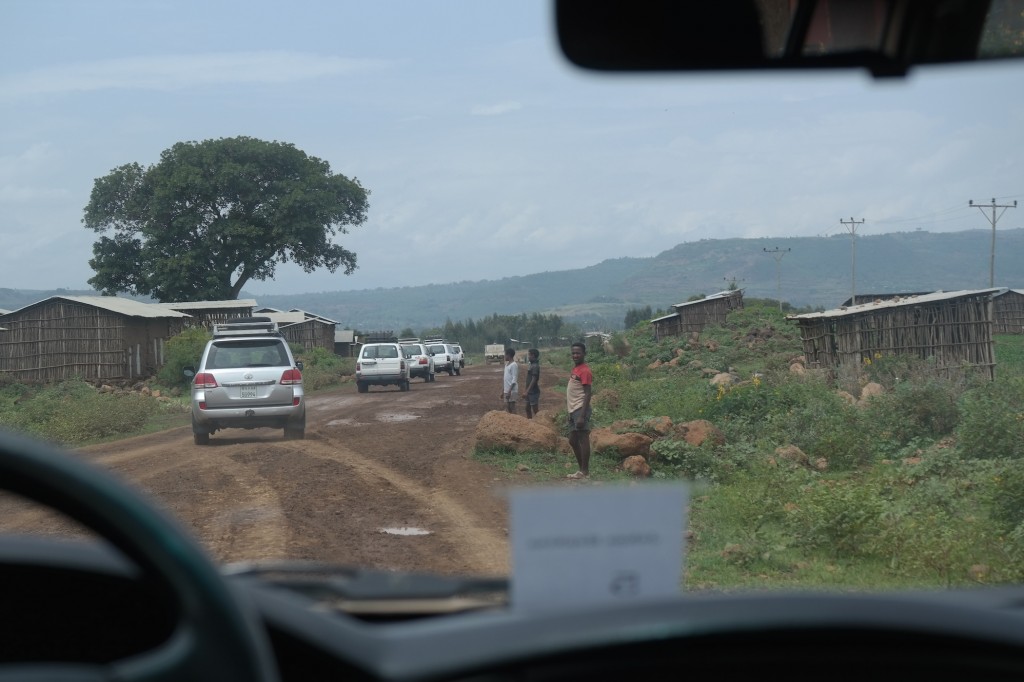
We had just spent the night at the source of the Blue Nile River. Lake Tana sits in Bahir Dar, Ethiopia, and as our caravan of Land Cruisers wove through the countryside from Bahir Dar to Mosebo I took in deep gulping breaths of sweet fresh Ethiopian air. The lush colors of our surroundings looked to me like they had been enhanced in Photoshop in the way that everything seemed to pop. How could I feel this emotional connection to place that was never mine? A place I had never been?
Though this is my first time in Ethiopia, the verdant landscape brought me back to other rural parts of Africa I’d traveled through in my youth, similar topographies that had stayed with me ever since. This time I’d returned to the continent as a new media fellow with the International Reporting Project to report on newborn health. World Moms Blog Editor Nicole Melancon of ThirdEyeMom is a fellow on the trip as well, and last week wrote about our initial overview of maternal and newborn health in Ethiopia. Now we were heading to one of the villages housing a Health Post, which serves the local and surrounding population of approximately 3,500 people.
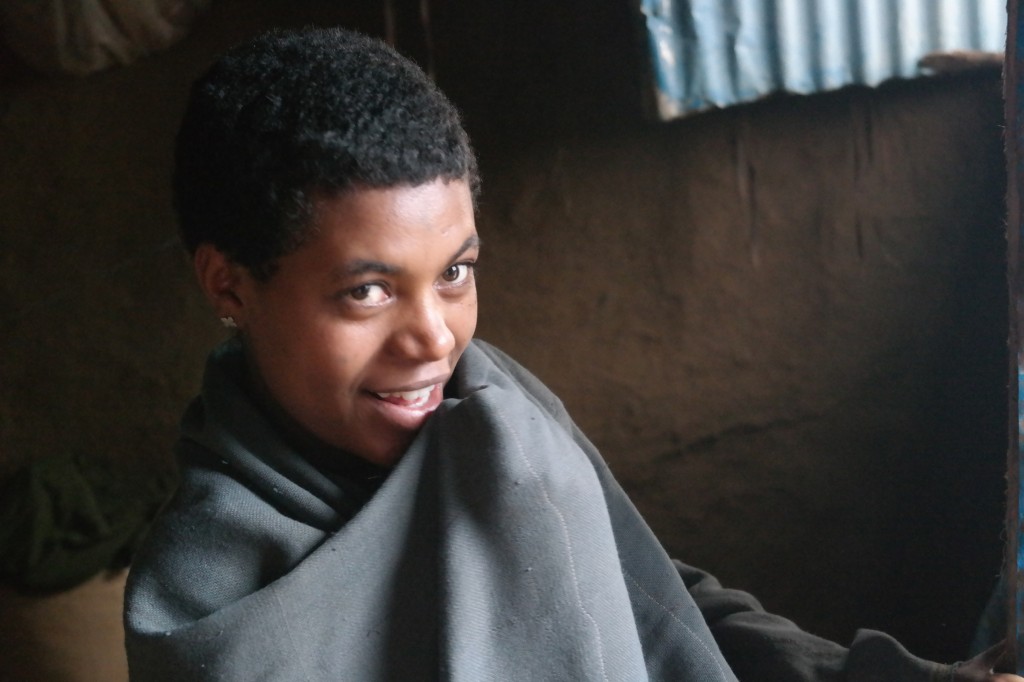
Mosebo Village is part of Save The Children’s Saving Newborn Lives program, and as such is looked to as a model village in the Ethiopian Government’s plan to reduce maternal and newborn mortality. Mosebo is a rural agrarian community that produces wheat, teff and corn. There I met seven-year-old Zina whose mother, Mebrate was about to give birth. Through our translator Mebrate estimated her age to be around 26, and told us that Zina was her first child. For economic reasons she and her husband had waited to have a second. When she had Zina, Mebrate had gone to her parent’s home to give birth, as women in Ethiopia often do. It is estimated that 80% of Ethiopian mothers will give birth in their home, often without a trained health care attendant. Towards the end of Mebrate’s first pregnancy she went to live with her parents as her family instructed, until after the baby was born. In that way her mother could help her deliver, could care for her and the baby, and feed her the traditional porridge after birth. Although there were no complications during her delivery, sadly, many young mothers giving birth at home are not as fortunate. The time period during and around birth are the most vulnerable for the lives of both the mothers and babies. The Saving Newborn Lives Program aims to reduce maternal and newborn mortality beginning with awareness programs and antenatal care on the local level at Health Posts like the one we visited in Mosebo.
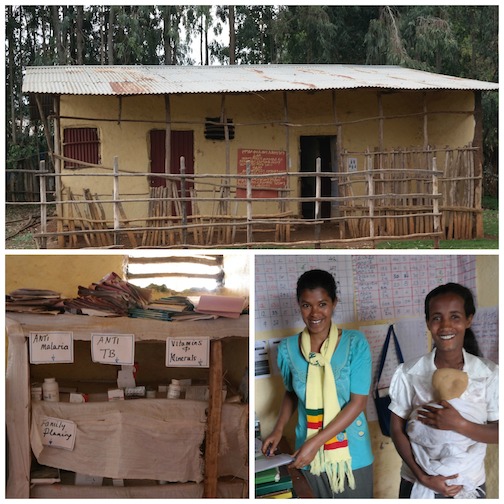
The Mosebo Health Post and Health Extension Workers
We had met Tirgno and Fasika, the two Health Extension Workers at the Mosebo Health Post earlier that day as they showed us the two room interior, and explained their role in improving maternal and newborn health. They work to raise awareness in the community about the importance of antenatal care, and the potential dangers of giving birth at home for both mother and child. Newborn health is interdependent with maternal health, and the most prevalent causes of newborn mortality, infection, Asphyxiation, pre-maturity or low birth weight, and diarrhea can often be avoided with proper care. These days in Mosebo after receiving antenatal care at the Health Post women are then referred to the regional Health Center for deliveries.
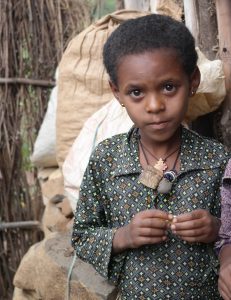
Zina shyly smiled when we ask her how she felt about having a new sibling, she stood straight and tall listening intently as we asked her mother about the babies’ arrival. When Mebrate goes into labor this time, with her second child, she will embark on the walk along rural dirt roads for around an hour to the nearest Health Center to give birth.
Elizabeth Atalay is reporting from Ethiopia as a fellow with the International Reporting Project (IRP). This is an original post written for World Moms Blog.
You can follow all IRP reports by World Moms Elizabeth Atalay & Nicole Melancon at #EthiopiaNewborns

Elizabeth Atalay is a Digital Media Producer, Managing Editor at World Moms Network, and a Social Media Manager. She was a 2015 United Nations Foundation Social Good Fellow, and traveled to Ethiopia as an International Reporting Project New Media Fellow to report on newborn health in 2014. On her personal blog, Documama.org, she uses digital media as a new medium for her background as a documentarian. After having worked on Feature Films and Television series for FOX, NBC, MGM, Columbia Pictures, Warner Brothers, 20th Century Fox, and Castle Rock Pictures, she studied documentary filmmaking and anthropology earning a Masters degree in Media Studies from The New School in New York. Since becoming a Digital Media Producer she has worked on social media campaigns for non-profits such as Save The Children, WaterAid, ONE.org, UNICEF, United Nations Foundation, Edesia, World Pulse, American Heart Association, and The Gates Foundation. Her writing has also been featured on ONE.org, Johnson & Johnson’s BabyCenter.com, EnoughProject.org, GaviAlliance.org, and Worldmomsnetwork.com. Elizabeth has traveled to 70 countries around the world, most recently to Haiti with Artisan Business Network to visit artisans in partnership with Macy’s Heart of Haiti line, which provides sustainable income to Haitian artisans. Elizabeth lives in New England with her husband and four children.
More Posts

 My family and I have just returned home to the United States after living in Laos for the past two years. We’ve been back in the States for 1.5 weeks and the highlight of my day today was a successful trip to a clearance sale at the local used children’s clothing store here in Denver, Colorado.
My family and I have just returned home to the United States after living in Laos for the past two years. We’ve been back in the States for 1.5 weeks and the highlight of my day today was a successful trip to a clearance sale at the local used children’s clothing store here in Denver, Colorado.





















